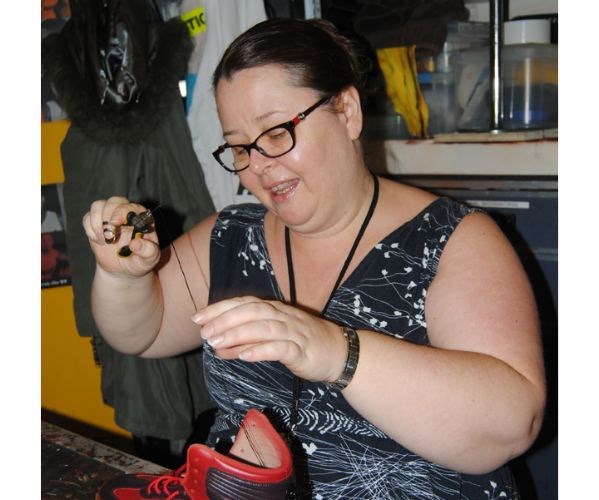Citizen reporter Frank Peebles was a guest of Cirque du Soleil for one day earlier this month, visiting Regina and the travelling production of Dralion. This is part one of a four-part peek behind the curtain of the show, which runs from Dec. 31 to Jan. 4 at CN Centre.
If the sole of a shoe malfunctions during the acrobatics of Dralion, a Cirque du Soleil performer could be seriously injured, or even worse.
When the aerial acro team members fall from the Dralion clouds and halt before striking the stage by cinching their arms to whispy fabric ropes or hooking onto spinning hoops, all that keeps their skin from friction lacerations are sleeves of burn-resistant material designed especially for their act.
After each performance of Dralion, and frequently there are two per day, a SWAT team of shoe and costume personnel comb every stitch of gear. They paint, repair and replenish anything that might be showing signs of fatigue from all the defiance of physics done minute to minute, hour after hour, night after night, for the past 15 years the Dralion has been on the road around the world.
"You can't be average at anything," said artistic director Sean McKeowon. "These shows bring the audience some 'Wow!' numbers, some poetic numbers, all alongside and intertwined with each other. It calls on thousands of years of circus performance traditions, theatre traditions, adds modern technologies, and searches the world for the best skills available on the planet. That applies to the performances and it has to also apply to the props and costumes and lighting. Backstage is just as important as onstage."
In the blackness behind the scenes of London's famed West End theatre district, Cirque scouts found Julie O'Brien. She joined the Dralion team working on costumes and was moved by her request to the specialized shoe department about a year ago when there was an opening. O'Brien said she "begged for this position" because it was such a skill development opportunity for her long-term career aspirations.
"Shoes in the West end need tiny repairs, but here I'm a cobbler," she said. "The shoes all have to be in tip-top condition. Soles do dislodge and come off. The visuals are important, but there are safety issues as well, definitely. It's a job to account for 300 pairs of shoes. Each person in the cast has three or four sets. A lot of them are custom-made for that performer's feet, and particular parts of the show."
Because she is the keeper of the leather-capable sewing equipment, she is also called on to repair and modify anything made of heavy duty materials, so her department goes beyond just shoes and just costumes, further diversifying her backstage skills.
Her other tools include hammers, paint brushes, a laptop loaded in schematics and colour codes, and she sits at the far end of the costume cluster. Each time the Dralion show sets up for a suite of shows in a new city, the giant equipment boxes, wardrobes and tickle-trunks are arranged side-by-side in a circle and open up to form an enclosed room in which all the costume and cobbler activities happen in orderly seclusion.
Although cast members and crew personnel are constantly coming and going to consult the artistic team on a smorgasbord of topics, new things are still emerging after 15 years on the road for Dralion.
"Last night was one of the few times I allowed myself to just sit back and take in the show for my own enjoyment, and I still came away with five pages of notes," said McKeowon. "The devil is in the details. But if you let the details slide, then other things come up, and that becomes noticable for the audience. We want the audience to have the room to focus on the amazing performance elements these people on stage can do. Few other people in the world can do these things, so it isn't fair to the performers or the crew or the audience if little distractions become a factor."
Which is why, after every performance, the bolts are retightened on the cross-hoops, the fur is brushed and the feathers fluffed on the animal costumes, the 500-pound wood/fiberglass walking ball is checked for dents, the Chinese yoyos are inspected for tight joints and so on.



